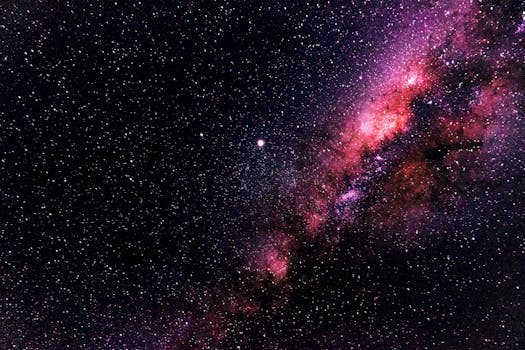
“
Beyond the Milky Way: Imagining New Worlds and Possibilities
Introduction to the Milky Way and Beyond
Beyond the Milky Way: Imagining New Worlds and Possibilities is a concept that has fascinated humans for centuries. Our galaxy, the Milky Way, is just one of billions in the observable universe, each containing billions of stars and potential planets. The idea of exploring these new worlds and possibilities is not only exciting but also challenging. In this article, we will delve into the possibilities beyond our galaxy and what it means for space exploration and our understanding of the universe.
Understanding the Scale of the Universe
To appreciate the scale of the universe, let’s consider some mind-boggling facts. The Milky Way galaxy is approximately 100,000 light-years in diameter, containing hundreds of billions of stars. However, it is just one of the billions of galaxies in the observable universe, with some estimates suggesting that there are over 100 billion galaxies in the universe. Each of these galaxies can contain billions of stars, and potentially, billions of planets, many of which could be similar in size and composition to Earth.
Imagining New Worlds
With the potential for billions of planets similar to Earth, the possibility of life existing elsewhere in the universe becomes increasingly plausible. The discovery of exoplanets, planets that orbit stars other than the Sun, has accelerated in recent years, with thousands of exoplanets discovered so far. Some of these exoplanets are believed to be located in the habitable zones of their respective stars, where conditions are suitable for life as we know it. The search for life beyond Earth, whether in the form of microbial life or complex organisms, is an active area of research, with scientists using a variety of methods to search for biosignatures, signs of biological activity.
The Possibilities of Space Exploration
The possibility of exploring these new worlds and possibilities raises several questions and challenges. For instance, how can we travel to these distant planets and galaxies, given the vast distances involved? Current propulsion technologies are limited, and the fastest spacecraft, Voyager 1, has been traveling for over 40 years and has only reached a distance of about 14 light-hours from Earth. However, scientists and engineers are working on developing new propulsion technologies, such as fusion propulsion and light sails, which could potentially allow for faster travel times. The exploration of these new worlds is a frontier that continues to inspire innovation.
Conclusion and Takeaways
In conclusion, the possibilities beyond the Milky Way are endless and fascinating. The potential for billions of planets similar to Earth, the possibility of life existing elsewhere in the universe, and the challenge of space exploration are all topics that continue to capture our imagination. As we continue to explore and understand the universe, we may uncover new and exciting possibilities that challenge our current understanding of the cosmos. The key takeaways from this article are:
- The universe is vast, with billions of galaxies, each containing billions of stars and potential planets.
- The possibility of life existing elsewhere in the universe is increasingly plausible, with the discovery of exoplanets and the search for biosignatures.
- Space exploration is challenging, but scientists and engineers are working on developing new propulsion technologies to allow for faster travel times.
- The search for life beyond Earth and the exploration of new worlds and possibilities are active areas of research that continue to capture our imagination.






